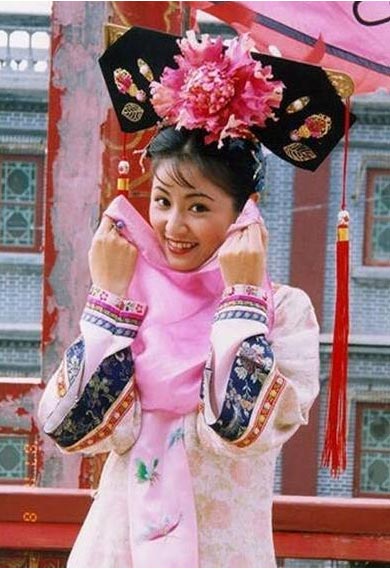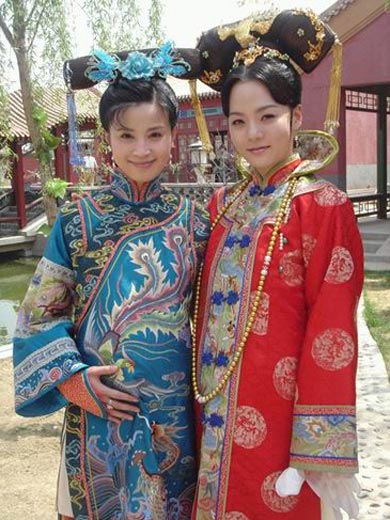
The organization of political power mainly consisted of the rulers of the Manchu ethnic minority in the Qing Dynasty (1644-1911), so the customs of Manchu affected those of the Central Plains. The traditional dress code that had been handed down for several thousand years was damaged because of the invasion of the Eight Banners soldiers. It might be said that this innovation was another improvement of China's traditional dress code. It was the third obvious revolution after the Mongol Costumes for Arrow Shooting on Horseback and the Open Dresses of the Tang Dynasty in the history.
SinceQizhuang(costumes of bannermen) were convenient for dressing and cost fewer materials, they replaced the complicated ancient blouses and skirts. This was the main reason that later generations easily accepted the dressing style ofQizhuang.
The Qizhuang of Manchu ethnic minority looked rectangular, and the saddle-shaped collar could cover the cheek and protect the face. The costume had no waistline, and their U-shaped sleeves with semicircle cuffs could cover the hands. The clothes were decorated with laces and a sleeveless jacket or a mandarin jacket could be worn over a gown. The Qizhuang costume still has certain impacts on modern costume. Especially, along with the development of China, a cheongsam that demonstrates women's curvaceous beauty has become the representative garment of the Han people, as it can show the femininity and temperament of oriental ladies.

A cheongsam or a short coat had a lute-shaped front, a front with buttons on the right or a front of Chinese-style jacket with buttons down, etc. A skirt or a pair of trousers used to match a cheongsam was decorated with printing, embroidering, oblique seaming and other techniques. Women of Manchu ethnic minority neither bound their feet nor wore skirts. The sleeveless jacket (padded or lined) over the coat was of the same length as the coat, and within it there was a small underwear, which was equivalent to the bellyband worn by women of the Han people.